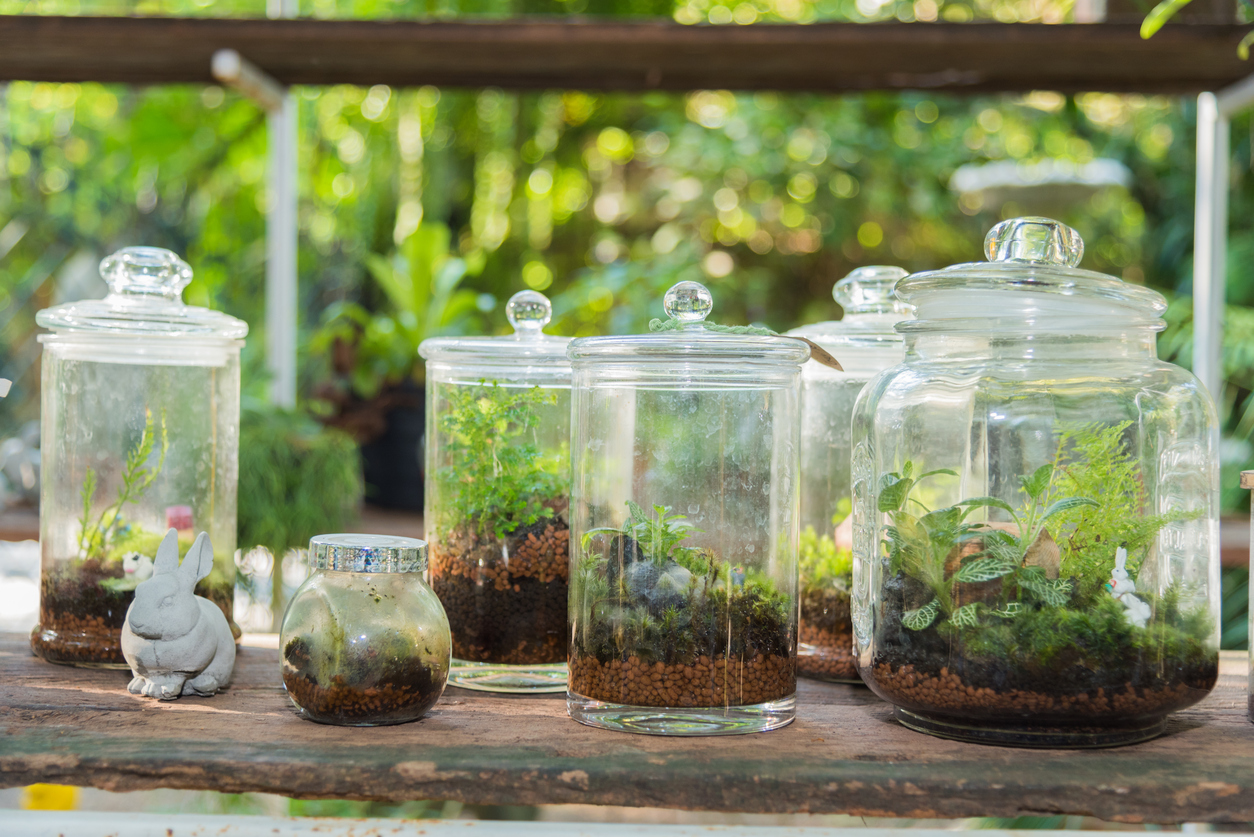
Looking for something to keep the kids occupied these school holidays? Rather than plonking them in front of the television, why not get their hands a little dirty with this fun terrarium project, supplied by kidsgardening.org.
A terrarium is a miniature garden grown inside a covered glass or plastic container. It is a low maintenance way to incorporate plants into your classroom or home and an excellent tool for teaching children about the water cycle as it demonstrates evaporation, condensation and precipitation. In the presence of light and heat, water evaporates from the plants through transpiration and from the soil. Since it is an enclosed environment, when the water vapor hits the side of the container, it condenses. Once enough water accumulates or the temperature decreases, the condensation will then precipitate down the sides of the container back into the soil.
You will need:
Instructions:
There is a wide range of plants to choose from. Most garden centers have an area reserved for indoor plants and you can usually find a variety of plants in 2 to 4 inch pots.
Hi there,
Would you like to receive home decor
ideas and DIY tips to your inbox?
Subscribe to our mailing list!

